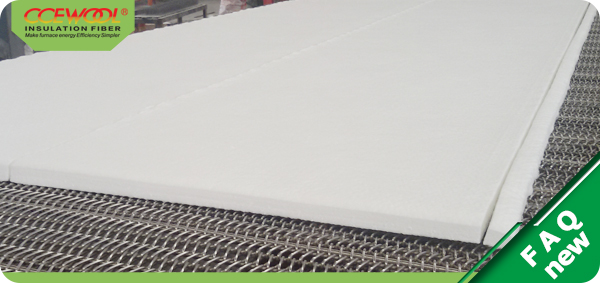The soaking furnace is a key metallurgical unit used for reheating steel ingots prior to hot rolling, ensuring uniform temperature distribution. This type of furnace typically features a deep-pit structure and operates intermittently under variable temperatures, with working temperatures reaching as high as 1350–1400°C.
Due to long holding times, intense heat concentration, and deep chamber design, soaking furnaces demand exceptional temperature stability, insulation performance, and thermal efficiency.
In areas such as the heat exchange chamber, furnace roof backing, furnace cover, and the cold surface of the furnace shell, lightweight insulation materials are essential to control surface temperature and reduce heat loss. The CCEWOOL® ceramic fiber insulation roll offers a high-performance insulation solution tailored to these metallurgical applications.
Product Features and Material Advantages of CCEWOOL Ceramic Fiber Blankets
CCEWOOL® ceramic fiber insulation rolls are flexible blankets made from high-purity alumina and silica using modern spun-fiber and needling technology. With temperature grades ranging from 1260°C to 1430°C, they are ideal for insulation in backing, cold surfaces, and sealing areas of high-temperature metallurgical equipment. Key advantages include:
•Low thermal conductivity: Effectively blocks heat transfer even at elevated temperatures.
•Lightweight with low heat storage: Reduces heat loss and speeds up heating cycles.
•High flexibility and ease of installation: Can be cut, folded, and shaped to suit complex structures.
•Excellent thermal shock resistance: Durable and resistant to spalling or degradation over time.
CCEWOOL® also offers ceramic fiber blankets in various densities and thicknesses, as well as compressible ceramic fiber felts, providing flexible options to meet different design, anchoring, and temperature control requirements.
Typical Applications and Structural Practices
1. Heat Exchange Chamber Insulation
As the zone for recovering residual heat from steel ingots, the chamber typically operates between 950–1100°C. A composite structure combining flat-laid ceramic fiber blanket and modular components is used here.
CCEWOOL® ceramic fiber insulation rolls are laid in 2–3 layers (with total thickness of 50–80mm) as the backing insulation. On top, modular or folded blocks are anchored using angle iron systems, bringing total insulation thickness to 200–250mm, effectively keeping the furnace shell temperature below 80°C.
2. Furnace Cover Structure
Modern soaking furnaces increasingly use castable + ceramic fiber blanket composite covers.
CCEWOOL® ceramic fiber insulation roll is used as the backing layer inside the steel cover, paired with refractory castables to form a dual-layer system that significantly reduces furnace cover weight, improves opening/closing efficiency, and minimizes heat loss.
3. Sealing and Edge Protection
For sealing zones around furnace lids, lifting interfaces, and openings, CCEWOOL® ceramic fiber rolls or felts are used to make gaskets or flexible sealing grooves, preventing heat leakage and air infiltration to improve temperature control accuracy.
As the metallurgical industry continues to pursue energy efficiency, lightweight equipment, and stable operation, the use of CCEWOOL® ceramic fiber insulation rolls in soaking furnaces continues to expand. Whether used in the heat exchange chamber, furnace lid backing, or for sealing and cold surface insulation, CCEWOOL’s ceramic fiber products offer excellent insulation and long-lasting performance—delivering more reliable and efficient thermal solutions for end users.
Post time: Apr-21-2025


